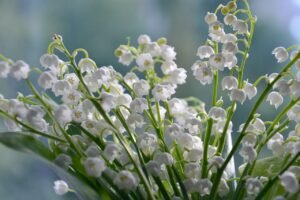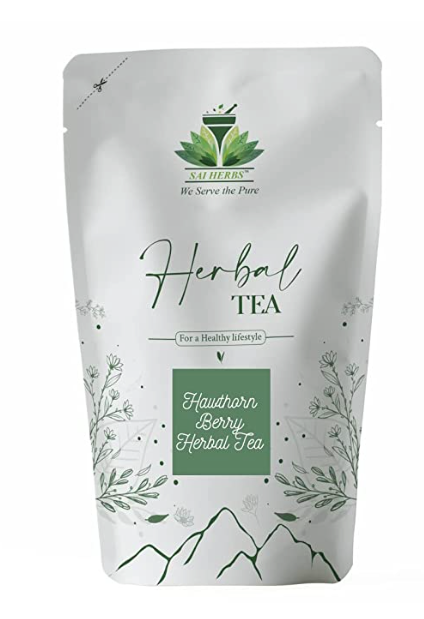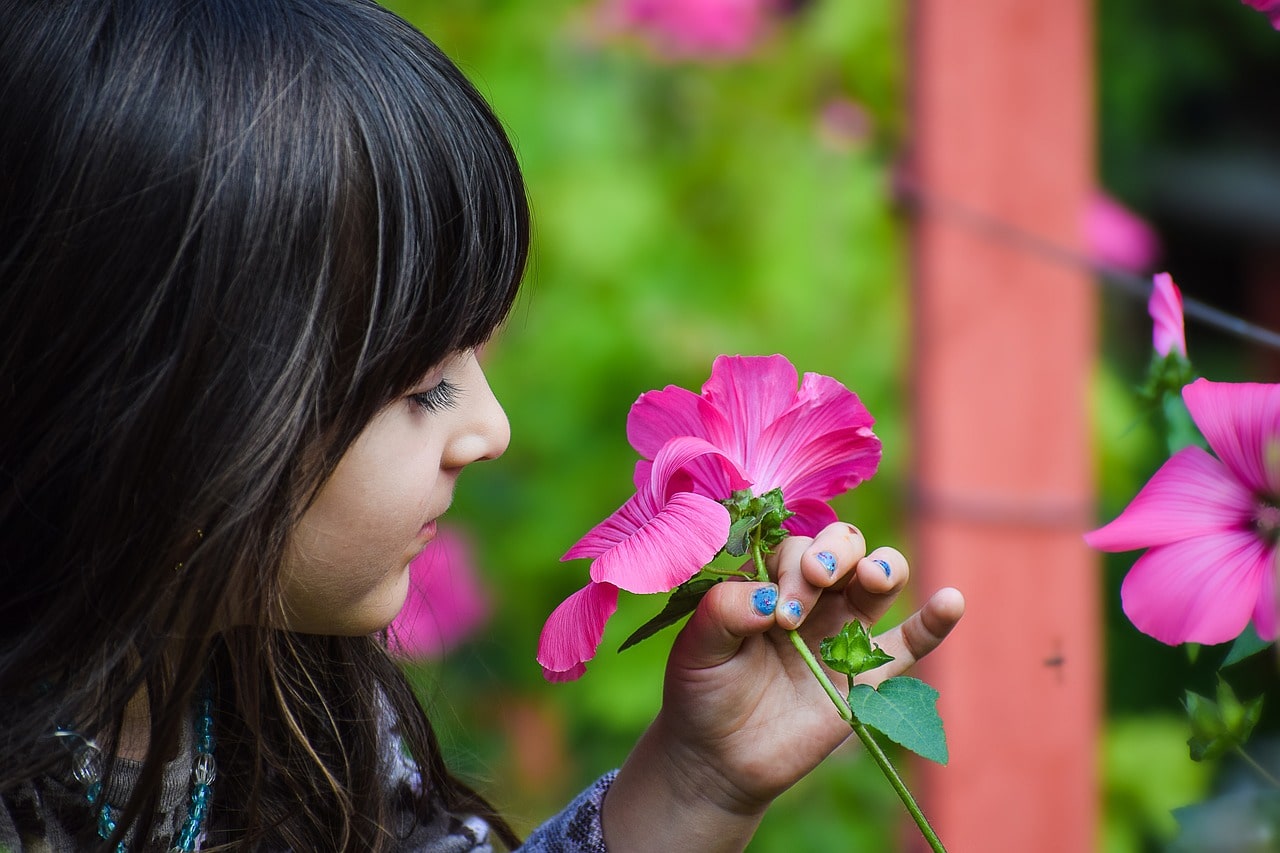May is a month of new beginnings, full of vibrant colors and fresh fragrances. It’s the perfect time of year to celebrate the birth flower for May, which is the delicate and lovely Lily of the Valley.
The May birth flowers are the Lily of the Valley and the Hawthorn. The Lily of the Valley is a delicate and fragrant flower with bell-shaped blooms that are white or pink. It is a popular choice for weddings and symbolizes sweetness, humility, and purity. The Hawthorn, also known as the Mayflower, is a small tree or shrub with clusters of white flowers or pink flowers. It is associated with love and protection, and in Celtic mythology, it was believed to be a portal to the fairy world. Both flowers are beautiful choices to celebrate May birthdays, and they are often used in bouquets, corsages, and other floral arrangements.
All About Lily-of-the-Valley – May birth month flower
Lily of the Valley, or Convallaria majalis, is a fragrant and delicate perennial plant that is native to Europe and parts of Asia. It is known for its distinctive bell-shaped white flowers that bloom in the spring and early summer, and its glossy green leaves. The flowers have a sweet fragrance that is highly sought after in perfumes and fragrances.
Lily of the Valley prefers cool, moist soil and partial shade, making it an ideal choice for woodland gardens or shady areas of the yard. It can also be grown in containers or used as a ground cover. However, it is important to note that the plant is toxic and should be planted away from areas where children and pets play.

Characteristics of Lily of the Valley
Lily of the Valley is a delicate flower that blooms in the springtime. It has small, bell-shaped flowers that grow on a stem, and it emits a sweet fragrance. The flowers are typically white, although there are some varieties that have pink or yellow blooms. The plant grows to be about six inches tall and spreads out in a clump.
Lily of the Valley is known for its sweet and alluring scent. The fragrance is often used in perfumes, soaps, and lotions. It’s also used in aromatherapy to promote relaxation and reduce stress.
Uses of Lily of the Valley
Lily of the Valley is a popular choice for bridal bouquets and wedding arrangements. Its delicate beauty and sweet fragrance make it a romantic and elegant choice. It’s also a popular flower for Mother’s Day and other special occasions in May.
In addition to its beauty and fragrance, Lily of the Valley has medicinal properties. It’s been used for centuries as a natural remedy for a variety of ailments, including heart problems, menstrual cramps, and headaches. However, it’s important to note that Lily of the Valley is toxic if ingested, so it should not be consumed.
Lily-of-the-Valley Meanings and Symbolism
Lily-of-the-Valley has a variety of meanings and symbolism depending on culture and context. Here are a few of the most common:
- Sweetness and Humility: One of the most common meanings of Lily-of-the-Valley is sweetness and humility. The delicate, sweet-smelling flowers are seen as a symbol of modesty, grace, and gentleness.
- Purity and Innocence: Lily-of-the-Valley is often associated with purity and innocence, particularly in Christian symbolism. In some cultures, it’s believed that the flower was created by the tears of the Virgin Mary, and it’s often included in religious ceremonies.
- Return of Happiness: In Victorian England, it was believed that giving someone Lily-of-the-Valley would bring back happiness. The flower was often given as a gift on May Day, which was a celebration of spring and the return of warmth and joy.
- Love and Romance: Lily-of-the-Valley is sometimes associated with love and romance, particularly in the language of flowers. It’s said that giving someone a bouquet of Lily-of-the-Valley represents the giver’s desire for the recipient to be happy.
Lily-of-the-Valley in the Garden
Lily-of-the-valley is a delicate and fragrant perennial plant that is a popular addition to many gardens. With its bell-shaped white flowers and shiny green leaves, it is often used as a ground cover or border plant, and it can also be grown in containers. This plant prefers cool, moist soil and partial shade, making it a great choice for woodland gardens or shady spots in the garden. While it is a beautiful addition to the garden, it is important to note that lily-of-the-valley is poisonous and should be planted away from areas where children and pets play. Despite this, it remains a popular choice among gardeners who appreciate its elegant appearance and sweet fragrance.
May Birth Flowers Gift Ideas: Celebrate Your Loved One’s Birthday with These Beautiful Presents from Amazon
The May birth flower is the Lily of the Valley, a delicate and fragrant flower that symbolizes sweetness, purity, and humility. The Lily of the Valley is often used in bridal bouquets and represents the return of happiness. The other birth flower for May is the Hawthorn, a tree with fragrant white or pink flowers that symbolize hope and protection.
Lily of the Valley Candle: This candle from Wax and Oils features the delicate scent of Lily of the Valley and comes in a beautiful glass jar that can be reused once the candle has burned out.

Hawthorn Berry Tea: This tea from Alvita is made with organic hawthorn berries and has a delicate, fruity flavor that is perfect for a relaxing cup of tea.

All About Hawthorns – May Birth month flower

The Hawthorn flower, also known as Mayflower or Crataegus monogyna, is a small, deciduous tree or shrub that is native to Europe, Asia, and North America. It is known for its beautiful clusters of white or pink flowers that bloom in the spring, followed by small red or black fruit that ripens in the fall.
The Hawthorn flower has a long history of medicinal use and has been used to treat a variety of ailments, including heart and circulatory problems, digestive issues, and anxiety. It contains compounds that are thought to improve blood flow to the heart and dilate blood vessels, making it a popular choice for those with cardiovascular issues.
Hawthorn Meanings and Symbolism
- Love and Protection: The Hawthorn flower is associated with love and protection. In the language of flowers, it represents hope, happiness, and the assurance of mutual love. It is often used in weddings and other celebrations as a symbol of love and commitment.
- Renewal and Rebirth: The Hawthorn flower is also associated with renewal and rebirth. It blooms in the spring, signaling the start of new life and growth after the long winter months.
- Fertility: In ancient Celtic mythology, the Hawthorn was believed to be a symbol of fertility and was associated with the goddess of love and fertility, Olwen.
- Healing: The Hawthorn flower has been used for centuries for its medicinal properties, and is believed to have healing powers for the heart and circulatory system.
- Protection against Evil: In many cultures, the Hawthorn flower is believed to protect against evil spirits and negative energy. It is often used in religious ceremonies and rituals for this purpose.
Hawthorn in the Garden
Hawthorn, or Crataegus, is a versatile and hardy plant that can be a beautiful addition to any garden or landscape. Here are some tips for growing Hawthorn in your garden:
- Soil and Sunlight: Hawthorn prefers well-draining soil and full sunlight, but it can also tolerate partial shade. It can grow in a variety of soil types, but it thrives in rich, loamy soil.
- Watering: Hawthorn needs regular watering, especially during the first year of growth. Once established, it can tolerate drought, but it will produce more flowers and fruit with consistent moisture.
- Pruning: Hawthorn should be pruned in late winter or early spring to encourage new growth and maintain a healthy shape. It is important to wear gloves when pruning, as the thorns can be sharp.
- Pest and Disease Control: Hawthorn is relatively pest and disease-resistant, but it can be susceptible to fungal diseases like rust and leaf spot. Regular inspections and proper care can help prevent these issues.
- Uses in the Landscape: Hawthorn can be used in a variety of ways in the landscape, including as a hedge, screen, or ornamental tree. Its beautiful flowers and fruit make it a popular choice for gardens and landscaping.
Faqs
1. Is May Birth Flower lily or lily of the valley?
The May Birth Flower is the Lily of the Valley, not the Lily. While both are beautiful flowers, they have different characteristics and meanings. The Lily of the Valley is a delicate and fragrant flower that symbolizes purity, sweetness, and humility. It is often used in bridal bouquets and other wedding arrangements, as well as in May Day celebrations.
2. What is the meaning of the May flower?
The meaning of the May Flower varies depending on the specific flower in question. In general, however, May Flowers are associated with springtime, new beginnings, and renewal. They are often seen as symbols of hope, happiness, and joy, and are commonly used in May Day celebrations and other springtime festivals.
3. Does May have 2 birth flowers?
Yes, May has two birth flowers: the Lily of the Valley and the Hawthorn flower. The Lily of the Valley is typically considered the primary birth flower for May, while the Hawthorn flower is often viewed as a secondary or alternative birth flower.
4. What are the medicinal benefits of Hawthorn?
Hawthorn has been used for centuries for its medicinal properties, particularly for its ability to support heart health. It is believed to improve blood flow to the heart, lower blood pressure, and reduce inflammation. It is also used to treat digestive issues, anxiety, and insomnia. Hawthorn can be consumed in the form of tea, tincture, or supplement, but it is important to consult with a healthcare professional before using it for medicinal purposes.
5 . How do you care for Lily of the Valley plants?
To care for Lily of the Valley plants, it is important to provide them with well-draining soil and partial to full shade. They prefer consistently moist soil, so regular watering is necessary. Lily of the Valley can be propagated by dividing the rhizomes in the fall, and should be fertilized sparingly with a balanced fertilizer. It is important to note that all parts of the Lily of the Valley plant are toxic if ingested, so it should be kept away from children and pets.
What is my birth flower?
What is my birth flower?
| Month | Birth Flower Chart | Meaning & Symbolic |
|---|---|---|
| Jan Birth Flower | Carnation | Love, fascination, and distinction |
| February Birth Flower | Violet | Loyalty, humility, and devotion |
| March Birth Flower | Daffodil | Rebirth, new beginnings, and happiness |
| April Birth Flower | Daisy | Innocence, purity, and new beginnings |
| May Birth Flower | Lily of the Vally | Happiness, humility, and sweetness |
| June Birth Flower | Rose | Love, passion, and beauty |
| July Birth Flower | Larkspur | Openness, positivity, and celebrating success |
| July Birth Flower | Water Lily | Purity, enlightenment, and rebirth |
| August Birth Flower | Gladiolus | Strength, integrity, and infatuation |
| September Birth Flower | Aster | Love, wisdom, and faith |
| October Birth Flower | Marigold | Passion, creativity, and grace |
| November Birth Flower | Chrysanthemum | Loyalty, love, and friendship |
| December Birth Flower | Poinsettia | Joy, purity, and rebirth |

